The Top 50 Cult Dive Spots
Cult Dive: Brothers Islands, Red Sea
Dive site: Big Brother
Location: Egypt, Red Sea
Type of dive: wall, deep
Max Depth: 40mt or certification depth limit
Level: experienced divers
Water temperature: 22-25°C in winter, 26-30°C in summer
Best time to dive here: all year round, best weather conditions from March until November.
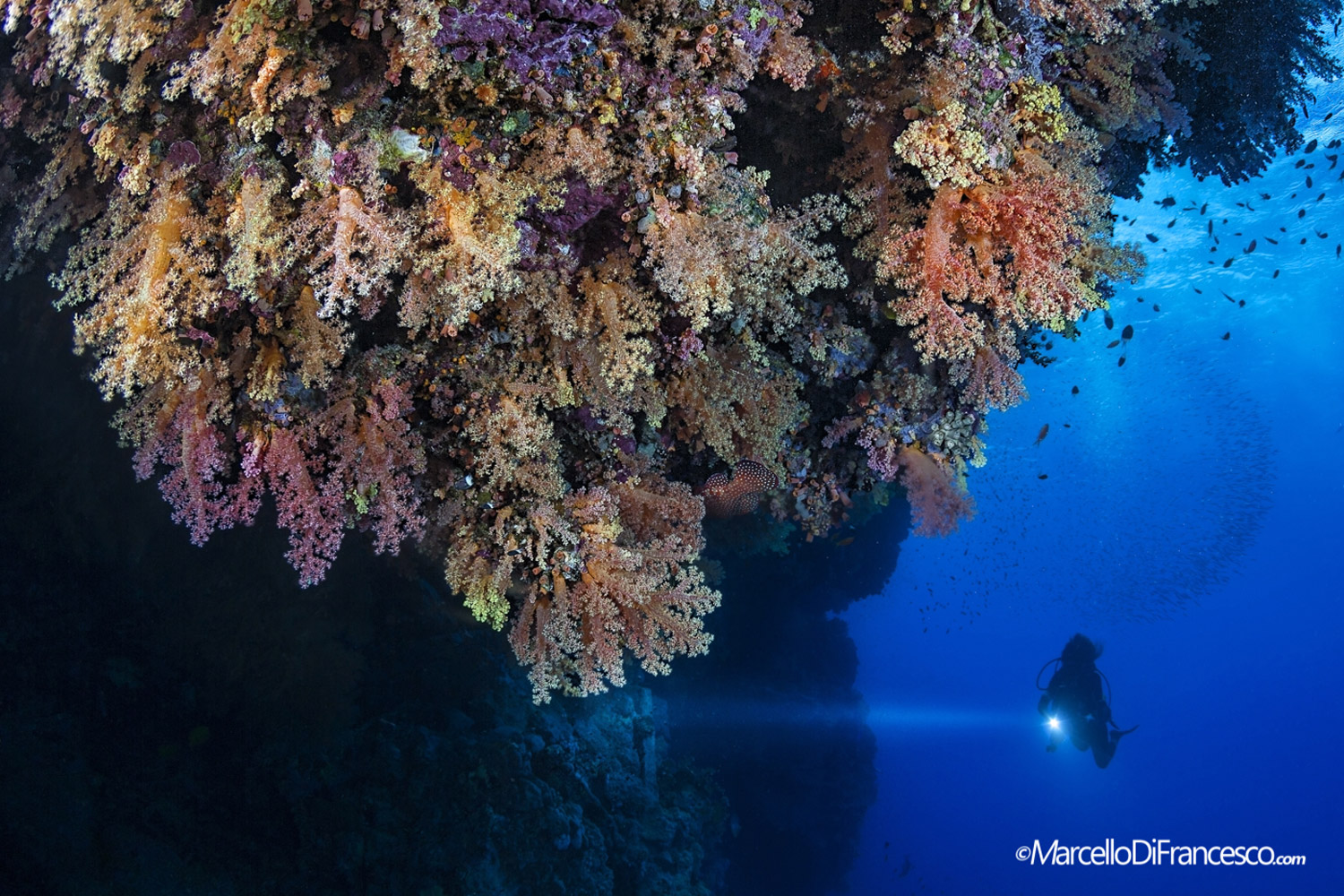
The breath-taking colors of the West wall of Big Brothers. (Canon 5Dmk3 + Tokina 10-17mm Nauticam Housing – F19 1/60 iso 200).
The Brothers Islands are without a doubt one of the most fascinating places to dive in the world. They are two small islands located 35 miles North-East off the coast of El Quseir, right in the middle of the Red Sea, between Egypt and Saudi Arabia, and the only way to visit them is on a liveaboard dive trip. Their isolated position and the difficulty in reaching them, make them one of the most pristine dive spots in the entire Egyptian Red Sea.
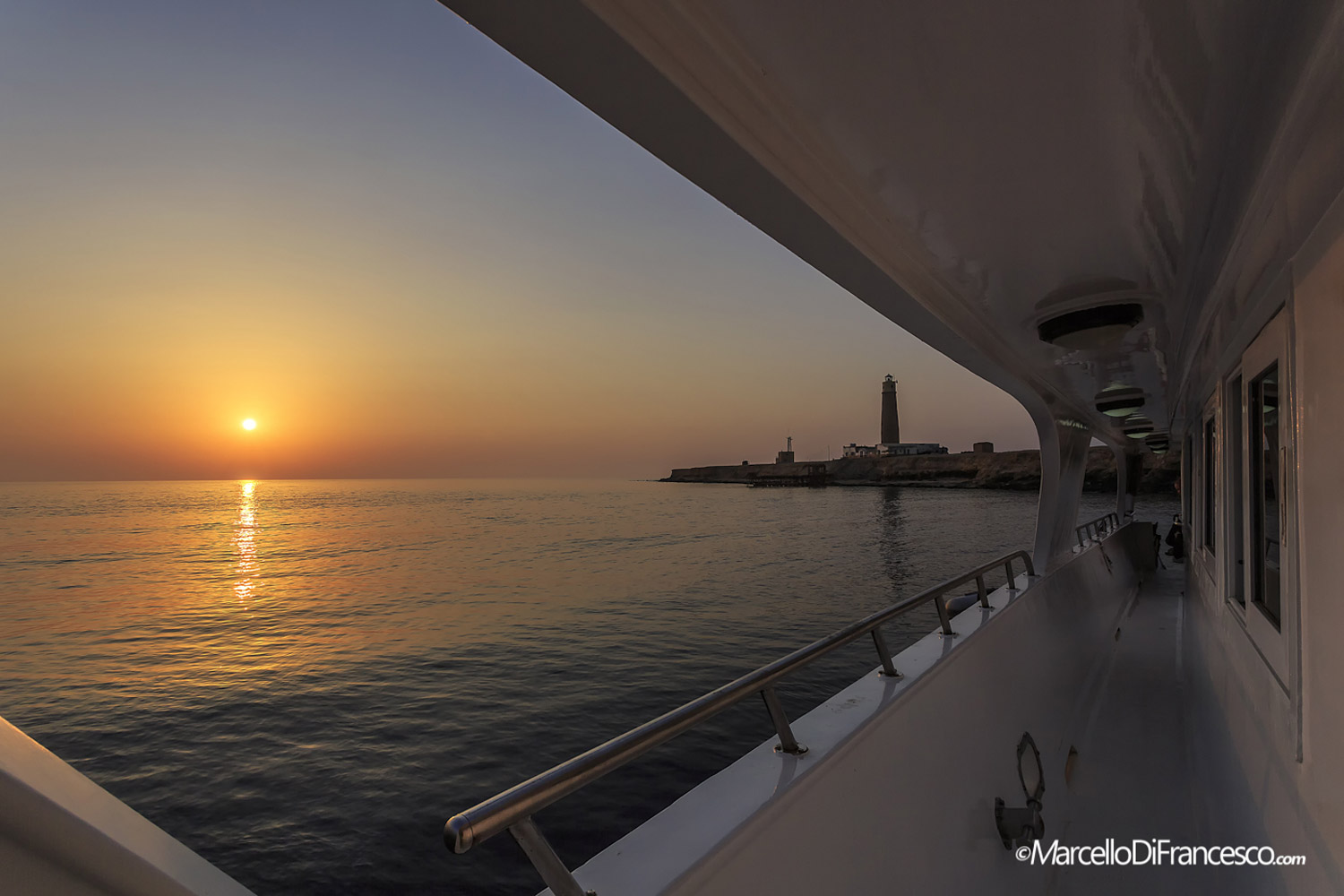
Sunset on the lighthouse of Big Brother reachable only on a liveaboard dive trip. (Canon 5Dmk3 + Canon 17-40mm – F16 1/200 iso 200).
The two islands are approximately 1 km away from each other. The larger one is in the North and it is called Big Brother, while the smaller one, Little Brother, is more to the South. Both are narrow pinnacle islands, reaching the surface from great depths, and surrounded for many miles by nothing except the open sea. When underwater, divers will be presented with vertical walls densely covered in hard and soft coral formations, filled with small caves and overhangs. Due to their position exposed to strong currents, the islands tend to attract numerous kinds of pelagic predators.
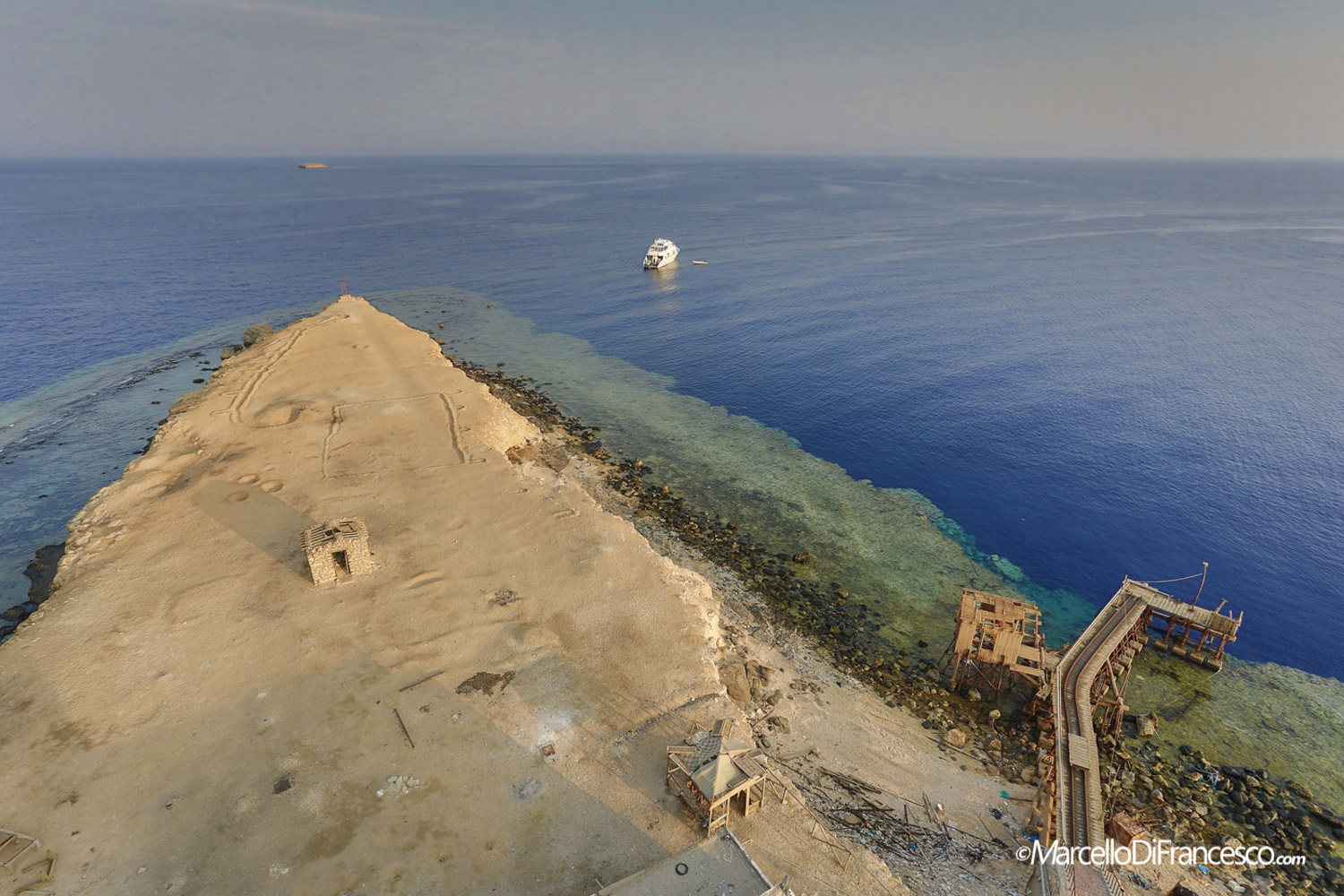
View facing South from the top of the lighthouse; in the distance, Small Brothers. (Canon 5Dmk3 + Canon 17-40mm – F10 1/200 iso 640).
The Brothers Islands are part of a marine protected area (marine protectorate), therefore authorization from the coast guard and the payment of a fee are required to dive in the surrounding waters.
Big Brother is approximately 400m long, and in 1883, the English built a lighthouse on it to warn the numerous ships coming from or going towards the Suez Canal of the presence of the islands. The lighthouse, which is still in use, is supervised by the navy personnel on the island, and can be visited.
The Big Brother dive site also includes 2 wrecks. Lying on the bottom, on the North point is the Numidia, an English merchant ship 145m long, which sank in 1901, and was carrying railway equipment. The Aida, on the West wall, is an Egyptian merchant ship that sank in 1947 due to bad weather. These two dives are surely very picturesque, and cannot be left out from the logbook of any wreck lover; they are even more spectacular thanks to the enormous quantity of sea organisms (sea fans, soft corals, sponges) that have completely covered in color the hulls and superstructures of these two ships.

Giant and lush sea fan colonies stand out against the deep blue of the Red Sea. (Canon 5Dmk3 + Tokina 10-17mm Nauticam Housing – F16 1/200 iso 200).
Briefing
On the island it is possible to engage in different types of dives, all highly exciting and adrenaline-filled. The part which is worth spending time on, in my opinion, is the West wall, which is entirely covered by an astonishing variety of corals. It will be difficult to find such concentration and variety anywhere else in the world! Usually, the boat will moor on the South side of the island, and the dive site located on the north-western side, close to the Aida wreck, will be reached by Zodiac. Depending on sea and current conditions, the entry in the water could be less than comfortable: divers must be well-coordinated and fast, so as to all jump in the water together, performing a negative entry, and meeting up with the other divers at a depth of 5m. From here, it will be enough to keep the reef on the left side and go with the current, which usually goes from North to South. The dive will start from shallower depths until reaching 40 meters, and slowly proceeding with a typical multi-level dive, ascending to the shallows. If air consumption permits, the dive will end having reached the area of the jetty of the island, where the support Zodiacs will pick up the divers and take them back to their boat.
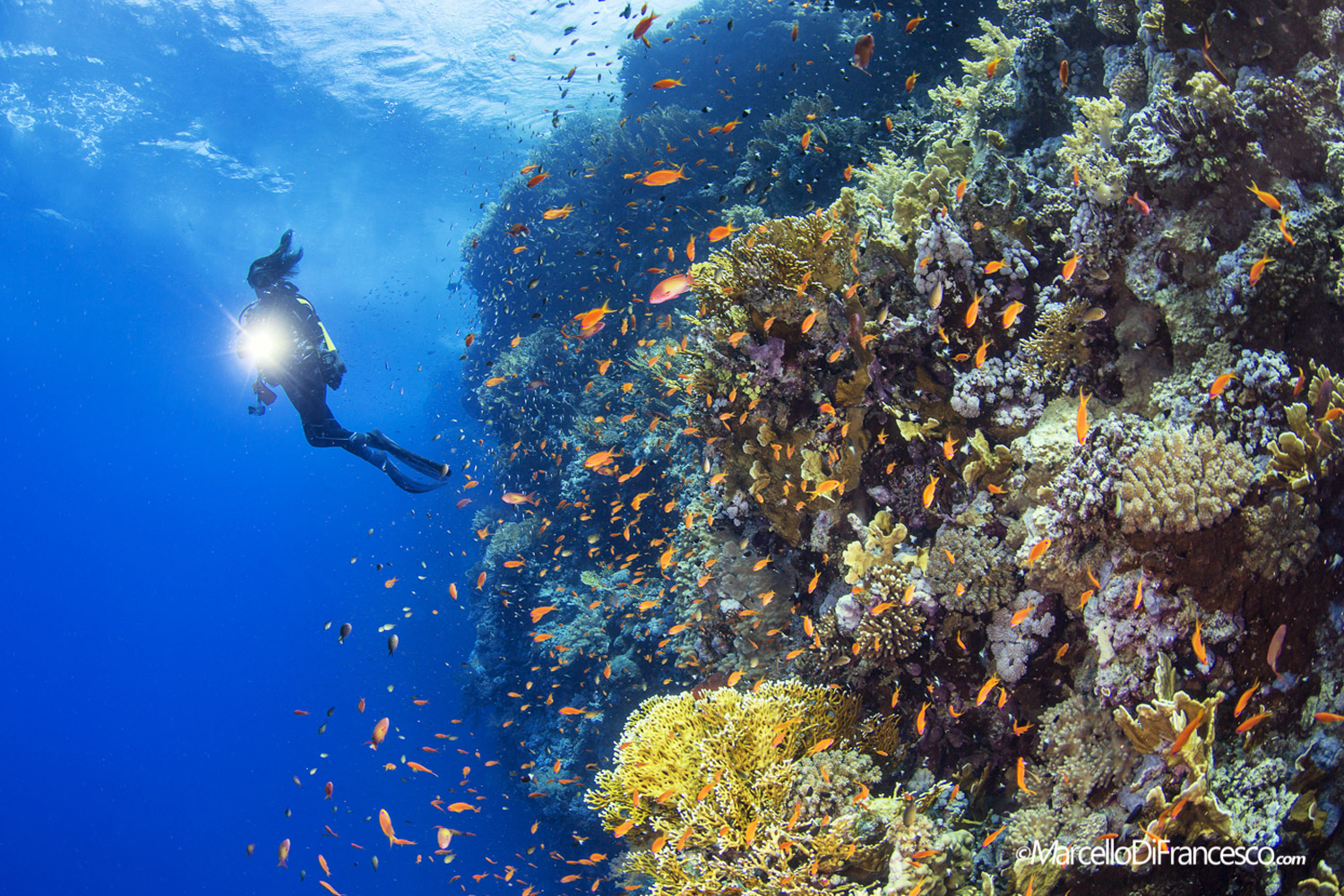
The thriving life of the reef even in very shallow waters. (Canon 5Dmk3 + Tokina 10-17mm Nauticam Housing – F10 1/80 iso 200).
The Reef is an explosion of color and life. Every part of the wall is alive with dozens and dozens of sea organisms: giant sea fan colonies give way to thick forests of soft corals of all colors. Monumental stony corals formations offer refuge to a multitude of reef fish. Here, groupers, porcupinefish, tropical goat fish, pufferfish, boxfish, clownfish, and stingrays trade places with pulsating clouds of anthias fish the color of fire. If you can manage to look away from the frenzy of reef fish life for a moment and you glance into the blue, a surprise may await you any minute: snappers, jackfish, barracudas, tunas, napoleon fishes, and turtles are common. Ultimately, it is really difficult to get bored around here.
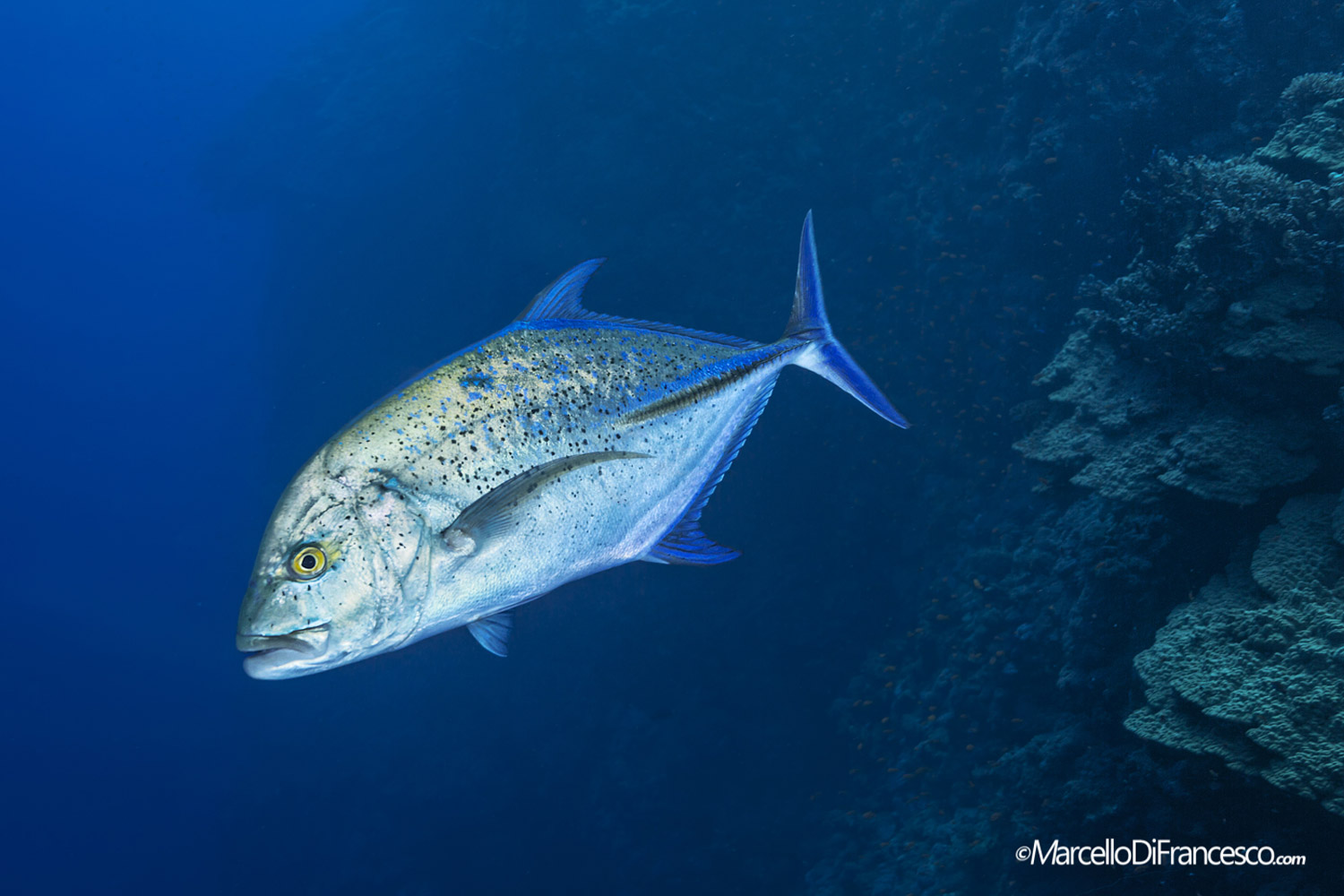
Jackfish hunting in the Blue. (Canon 5Dmk3 + Tokina 10-17mm Nauticam Housing – F10 1/160 iso 500).
Safety check
Let’s start by keeping in mind that these two islands are right in the middle of the Red Sea, with the nearest hyperbaric chamber several hours navigation away, and the SAR service not currently active (07/2017 update). It is therefore fundamental to pay the greatest attention to safety: keep well hydrated, follow conservative dive profiles, reduce repetitive dives as much as possible, and dive on Nitrox whenever possible. But let’s take it one step at a time…
First of all, make sure that there is an Oxygen Kit on board, which is essential in case of a diving emergency. Also check that the Oxygen Kit is supplied with a modern delivery system and that the tank is full prior to your departure. On a liveaboard, usually divers will do up to 3 dives per day (night dives are forbidden on these islands), so keep an eye on depth gauges and dive computers. The water is so clear and there is so much light underwater, that less experienced divers might be deceived; it is easy to drop too deep without realizing it. Depth, decompression times, and surface intervals need to be checked closely, trying to keep conservative dive profiles.
To reach these islands, usually boats navigate at night; the crossing lasts approximately 6 hours, and it is done sideways in respect to the sea. For those who get seasick, I recommend to get motion sickness medication. Avoid taking Dramamine, buy ‘Stugerone tablets’ instead and make sure to take your pills about an hour before you start the sail.
On liveaboards, it is usually very hot, even if our perception may be misleading, due to the dry climate. It is very important to keep a good level of hydration. Dr. Adel Taher, Medical Director of DAN Egypt, advises to drink 3 to 4 liters of water per day in these conditions (dry heat, repetitive dives). It is recommended to dilute this dose during the whole day, drinking gradually, in quantities not exceeding 1/5 of a liter (a glass) each time, every fifteen minutes. Basically, 16 water intakes of 200ml during eight hours: 4 every sixty minutes when on board, 1 before, and 1 after each dive, in order to make up for the fluids lost during the 40-50 minutes of TDT.
If you drink more at frequent intervals, urination is stimulated, and the hyper-hydration benefits are lost.

Color, color, color… (Canon 5Dmk3 + Tokina 10-17mm Nauticam Housing – F9 1/60 iso 200).
Underwater photography advice
Crystal clear waters, abundance of light, vertical walls, and lush corals: bring with you domes, fisheye lenses, flashes, and you will have all that you need to take high-level wide-angle pictures. The structure of the wall often offers overhangs where sea fans and soft corals lean out into the blue, their position impeccable for vertical shots too. Ambient light is ever-present, even at 40 meters of depth: take advantage of it in the best possible way, and balance it with the artificial light of your flashes. Always consider the position of the sun during the three dives that you will do each day. I recommend using the early morning hours to take backlit shots, with the sun included in the frame, and the afternoon for long range shots of the wall, keeping the sun behind you. The walls extend to the surface, allowing you to take pictures during the safety stop as well. Make the most of these moments, because they offer really interesting glimpses, with a thriving reef life.

The light of the morning. (Canon 5Dmk3 + Tokina 10-17mm Nauticam Housing – F11 1/200 iso 320).
Conservation
These islands are known for being home to several species of sharks. These magnificent animals have been on our planet approximately 400 million years, and have survived extinctions, ice ages, and dramatic climate changes. Nonetheless, at present they are in great danger and on the brink of extinction, due to indiscriminate fishing practices.
Shark fishing is theoretically illegal since 1973, when Egypt became one of the 100 countries to sign the CITES (Convention on International Trade in Endangered Species), but only in 2006, thanks to the efforts of HEPCA ( a non-governmental organization that deals withe the protection and enhancement of the Red Sea area) the Egyptian Ministry of Agriculture and Fisheries has issued a national decree that prohibits shark fishing and the serving of shark meat in restaurants. In recent years, shark sightings in this stretch of sea have decreased drastically, but I’m confident that more and more people are becoming aware that these magnificent animals need to be protected, together with the fragile underwater ecosystem that is their home.
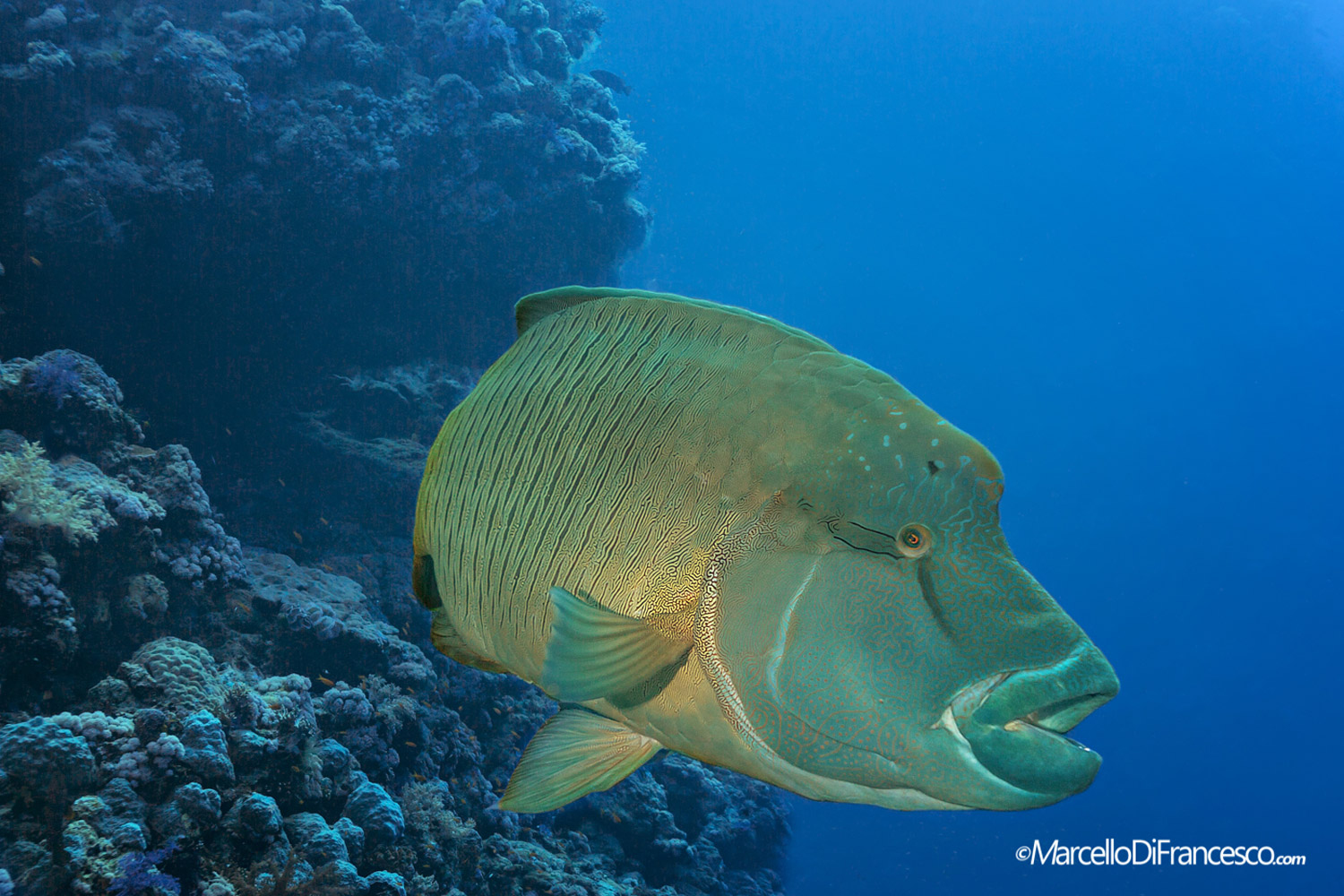
Napoleon fish. (Canon 5Dmk3 + Tokina 10-17mm Nauticam Housing – F8 1/60 iso 500).
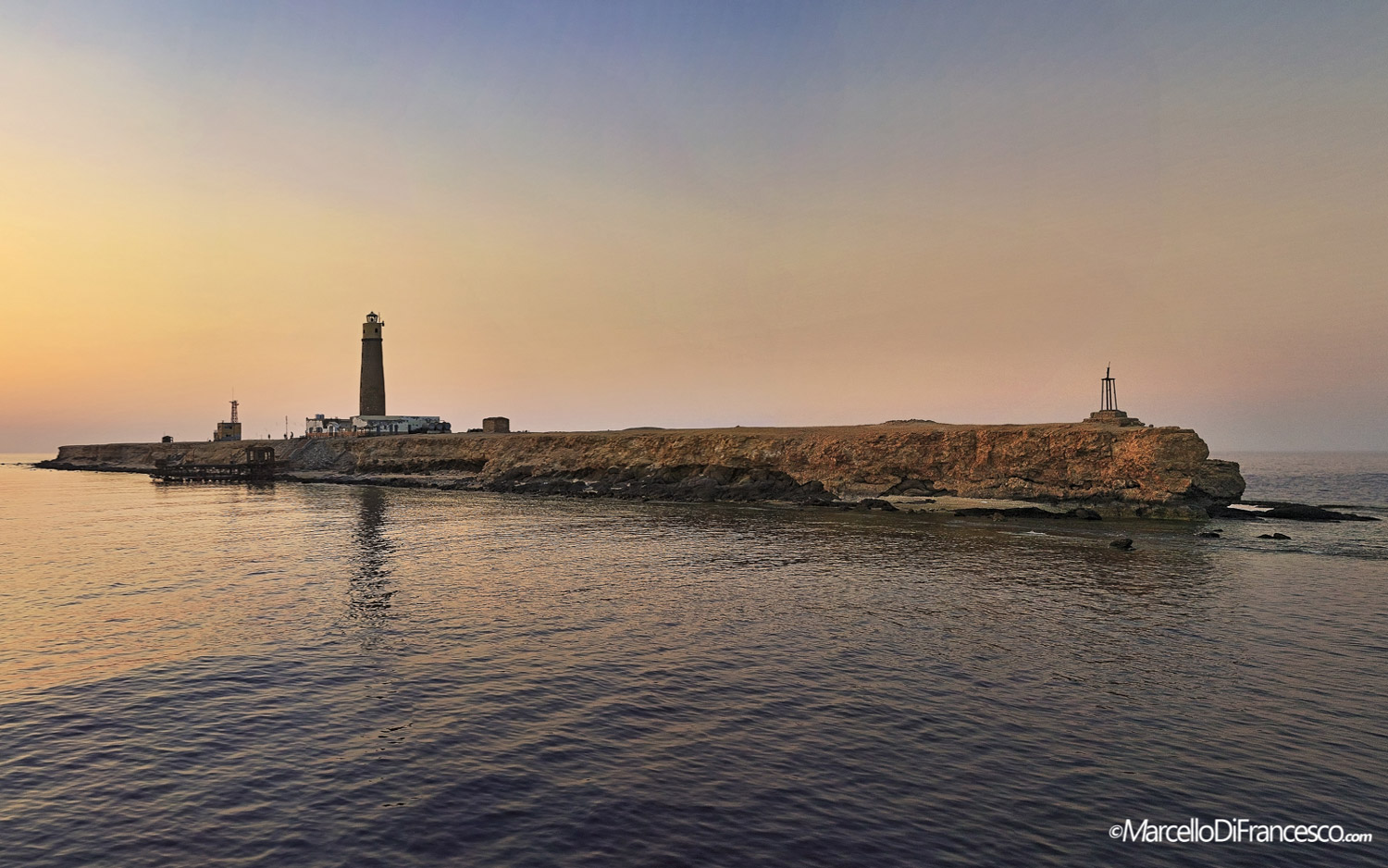
Sunset Overview. (Canon 5Dmk3 + Canon 17-40mm).

